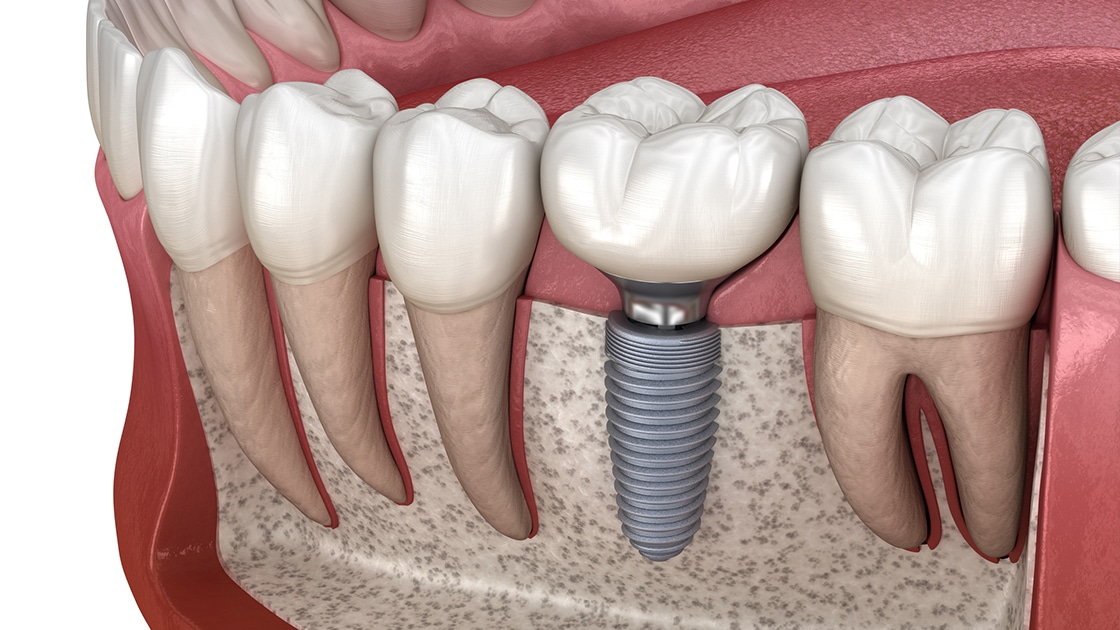Our Dental Sense Statements
Our Dental Sense Statements
Blog Article
Not known Facts About Dental Sense
Table of Contents5 Simple Techniques For Dental SenseLittle Known Facts About Dental Sense.The Dental Sense PDFsWhat Does Dental Sense Do?
are medical devices operatively dental implanted into the jaw to restore a person's capacity to eat or their look. They supply assistance for man-made (phony) teeth, such as crowns, bridges, or dentures. When a tooth is shed because of injury or condition, an individual can experience issues such as fast bone loss, faulty speech, or adjustments to eating patterns that result in pain.Oral implant systems contain an oral implant body and oral implant joint and may additionally include a joint fixation screw. Same day dental implants. The dental implant body is surgically placed in the jawbone in location of the tooth's root. The oral implant joint is typically connected to the implant body by the abutment fixation screw and prolongs via periodontals right into the mouth to support the connected artificial teeth
(https://dentalsense1.mystrikingly.com/blog/transform-your-smile-with-dental-implants-root-canal-procedures-and)Structure of The Dental Implant System choosing dental implants, talk with your dental copyright about the possible advantages and threats, and whether you are a candidate for the procedure. Things to think about: Your general wellness is an essential consider determining whether you are a good candidate for oral implants, how long it will certainly take to heal, and for how long the dental implant might remain in place.
Smoking might affect the recovery procedure and decrease the long-lasting success of the implant. The recovery process for the implant body may take a number of months or longer, throughout which time you typically have a temporary joint in location of the tooth. the dental implant treatment: Very carefully adhere to the dental hygiene guidelines provided to you by your oral provider.
More About Dental Sense
Implant failure can result in the demand for one more surgery to deal with or change the implant system. Restores the ability to chew Restores aesthetic look Aids keep the jawbone from reducing due to bone loss Maintains the wellness of the surrounding bone and gums Helps keep adjacent (neighboring) teeth stable Boosts high quality of life Damages to surrounding natural teeth during implant placement Injury to the surrounding cells throughout surgery, such as sinus opening Injury throughout surgical treatment (as an example, crack of surrounding jawbone) Inadequate function, such as seeming like the teeth do not attack together usually A feeling that the tooth is loose or turning in position arising from a joint screw loosening Implant body failing (looseness of the implant body) as a result of systemic infection, which may be much more most likely in people with uncontrolled diabetes mellitus as a result of regional infection in bone and gum tissues sustaining the dental implant body because of delayed healing, which may be a lot more likely in people who smoke Problem cleansing the gum tissues around the dental implant, leading to inadequate oral health Unattended periodontal disease Post-surgical pins and needles because of nerve impingement or damage Always notify healthcare service providers and imaging service technicians that you have dental implants prior to any magnetic vibration imaging (MRI) or x-ray procedures.
FDA is not mindful of any negative occasions reported for MRI or x-ray procedures with dental implants. Dental implants systems are typically made of materials that follow global consensus requirements of the International Organization for Standardization (ISO) or ASTM International. These standards have details of what makes a safe material.

A dental implant is a framework that replaces a missing tooth. With screw-like tools, the doctor inserts an implant into the jawbone, and it acts as a support for a man-made tooth, called a crown.
Fascination About Dental Sense
Some individuals are not eligible for dental implant surgical treatment. It is for dental surgeons to run on people with: intense illnessuncontrollable metabolic diseasebone or soft tissue condition or infectionIf these issues are resolved, an individual can have the surgical treatment. In, dental doctors avoid operating on people with: If individuals with any of the above undertake oral implant surgery, there is a greater risk of the dental implant failing.

Oral dental implant surgical procedure is an individualized process. It's not the exact same for every person. But the complying with gives a general summary of what you can expect your dental practitioner, dental surgeon, periodontist or prosthodontist to do: Position the implant operatively. Give you time to heal. Attach the blog post and last crown, bridge or denture.
Next, your doctor will thoroughly place the dental implant into your jaw. If your dental implant is near the front of your mouth, your dental practitioner will certainly make a short-term tooth for you to use up until you heal.
An Unbiased View of Dental Sense
Your copyright can inform you what to expect in your scenario. During the recovery stage, your jawbone needs to fuse to the dental implant. This procedure, called osseointegration, is vital for security and long-term success. This procedure can take anywhere from 3 to 9 months. Sometimes, it may take longer.
When your implant heals, your dentist can attach the abutment (tiny connector post) and your final restoration (crown, bridge or denture). This typically takes about one hour to finish and might call for a 2nd minor surgical treatment. You shouldn't really feel any pain during your dental implant treatment because your supplier will make use of medication to numb your periodontals.
Report this page